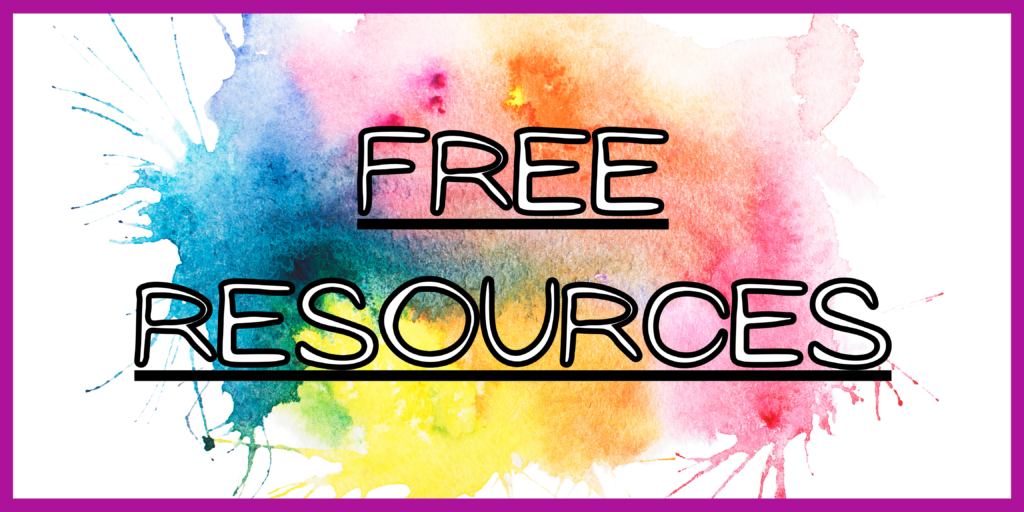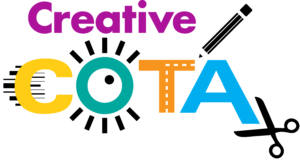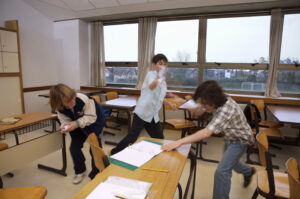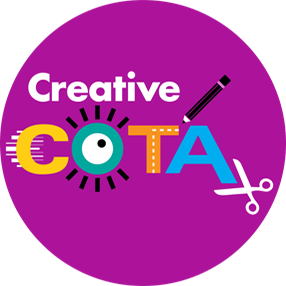
(This post contains affiliate links. If you use a link and make a purchase, I will receive a small fee at no cost to you.)
As an occupational therapist assistant, I often witness firsthand the role that visual perceptual skills play in a child’s academic success and overall development. Visual perceptual skills encompass the ability to interpret and organize visual information, which is essential for tasks such as reading, writing, and even everyday activities like navigating a busy classroom. For teachers and parents, understanding the importance of visual perceptual skills can significantly impact how we support children in their educational journey.
Are your students struggling with visual perceptual skills? Are they experiencing difficulties with reading, spelling, or handwriting? If so, I’m thrilled to offer a free resource designed to address these challenges head-on: this free spot-the-difference visual perceptual activities PDF! This post also contains other games and activities to promote visual perceptual development.

This free resource is perfect for small groups, occupational therapy sessions, morning bell work, stations, and early finishers. It features seasonal boards for Winter, Spring, Summer, and Fall, each offering engaging challenges to improve attention to detail, discrimination between similar images, concentration, and observation skills. The best part? It’s completely no-prep and ready to use!
What does the PDF include? You’ll receive a free sample of visual perception spot-the-difference pictures, one color board for each season, and an answer key for each page. Whether you prefer a tactile experience with printed and laminated materials or an interactive digital version for your classroom, we’ve got you covered.
When is the best time to use this resource? Whether it’s during small group activities, occupational therapy sessions, morning routines, stations, or with early finishers, these visual perceptual activities offer versatile options to suit your classroom needs.
What skills are students working on with this resource? By engaging with these activities, students will enhance their visual perceptual skills, attention to detail, discrimination between similar images, concentration, observation skills, reading and writing abilities, and hand-eye coordination.
Why is visual perception important? Difficulty processing visual information and poor visual-motor coordination skills can lead to challenges in reading, spelling, handwriting, drawing, math, and comprehension. Visual perception is the foundation for making sense of what we see, and it’s crucial to help children strengthen these skills through engaging activities.
In conclusion, investing in visual perceptual skill development can yield significant benefits for students’ academic progress and overall well-being. This free resource provides an effective and enjoyable way to promote these essential skills while catering to diverse learning styles and preferences. Download your free sample today and embark on a journey to enhance visual perceptual skills in your classroom or home environment. Together, we can empower every child to reach their full potential.
Download Now and enhance your student’s visual perceptual skills!
Games to Improve Visual Perceptual Skills:
- Spot It!: Spot It! is a fast-paced matching game that challenges players to find matching symbols on cards. It promotes visual scanning, attention to detail, and visual discrimination. With various themed editions available, such as animals, shapes, and symbols, it offers versatile options for skill development.
- Rush Hour: Rush Hour is a single-player logic game that requires players to maneuver vehicles on a grid to clear a path for the red car to exit. This game enhances problem-solving skills, spatial reasoning, and visual planning. It’s particularly beneficial for improving visual-motor coordination and executive functioning skills.
- Q-bitz: Q-bitz is a visual dexterity game that challenges players to recreate patterns using colorful cubes. Players race against the clock to match the pattern on the card using their set of cubes. Q-bitz promotes visual perception, pattern recognition, and spatial reasoning skills. It offers multiple levels of difficulty to accommodate different skill levels.
- Set: Set is a card game that challenges players to identify sets of cards based on specific attributes such as color, shape, number, and shading. This game enhances visual perception, pattern recognition, and attention to detail. Set is a versatile game that can be played individually or in groups, making it suitable for therapy sessions and classroom settings.
- Blink: Blink is a fast-paced card game where players race to match cards based on color, shape, or number. It promotes quick decision-making, visual perception, and pattern recognition skills. Players must scan and process information rapidly to be the first to get rid of their cards. Blink is ideal for occupational therapy sessions, classroom activities, or family game nights, offering engaging fun while enhancing visual perceptual abilities.
- Blokus: Blokus is a strategy game that requires players to place geometric shapes on a grid while strategically blocking their opponents. This game promotes spatial awareness, visual planning, and problem-solving skills. Blokus offers a stimulating and competitive environment for players to develop their visual perceptual abilities while engaging in strategic gameplay.
- Bananagrams: Bananagrams is a fast-paced word-building game where players race against each other to create interconnected words using letter tiles. The game encourages vocabulary expansion, spelling skills, and quick thinking. Bananagrams promotes visual perception as players visually scan their tiles, identify patterns, and form words based on spatial arrangements. It offers a fun and engaging way to enhance language and visual perceptual abilities in individuals of all ages.
Looking for more? Check out these money-saving bundles. Grab the full bundle or check out my store to see all my visual perceptual activities and worksheets.

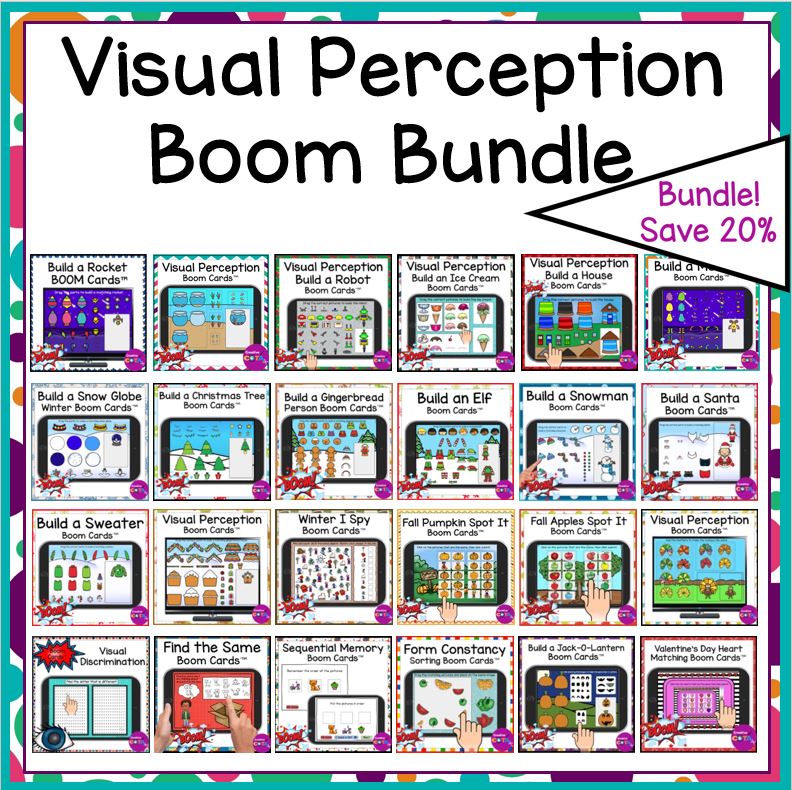
About The Author:
I am a Certified Occupational Therapy Assistant (COTA) and have been working in a public school system for more than 25 years. My resources can be found on TPT, BOOM Learning, Made by Teachers, Classful, and Your Therapy Source. I appreciate your interest wherever you wish to shop.
My mission is to help you find creative ideas to incorporate fine motor, visual perception, gross motor, and social-emotional learning into your lessons.
I hope you consider signing up for my Free Resource Library with your Email. I send out emails about once a week and share resources, tips, and planning ideas for your classroom or occupational therapy needs. Hopefully, these help your students work on building their skills in a fun and engaging way.
